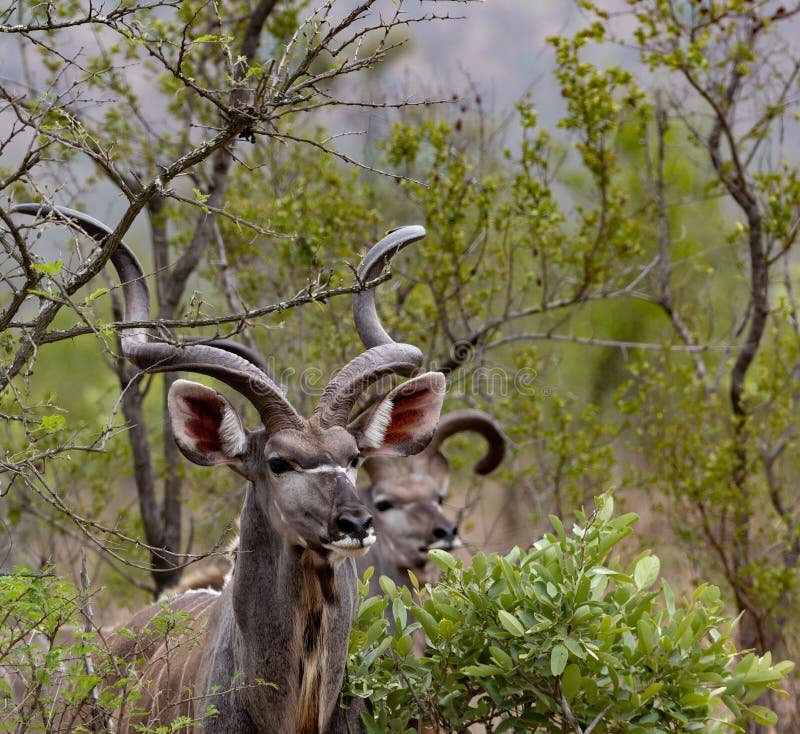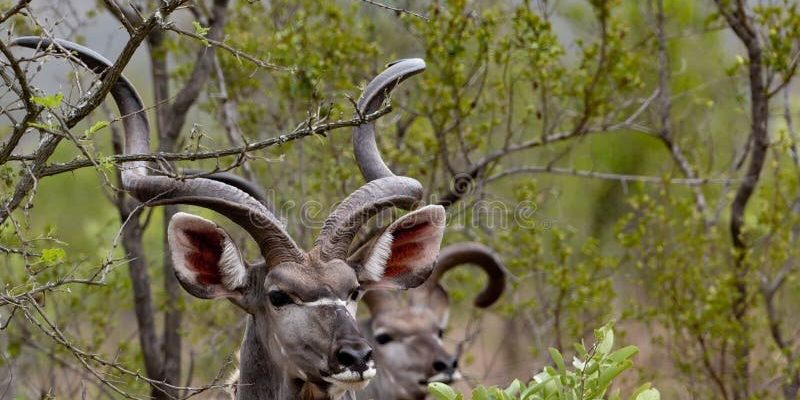
Now, you might be wondering how exactly these animals manage to cope with such harsh conditions. Well, it’s all about adaptation. They have developed specific physical characteristics and behaviors that allow them to evade predators and endure extreme weather. Let’s dig deeper into the survival strategies of kudus, exploring what makes them such resilient creatures.
Physical Adaptations for Survival
Kudus are known for their striking appearance, with long legs and spiraled horns, but it’s their physical adaptations that play a crucial role in their survival. The kudu’s sharp senses help them detect danger long before it arrives. Their large ears can rotate independently, allowing them to pick up sounds from various directions. This keen sense of hearing is a game-changer, especially in environments where predators lurk nearby.
In addition to their hearing, kudus have excellent eyesight. Their large, dark eyes are positioned to give them a wide field of vision. This helps them stay alert for threats in their surroundings. Interestingly, kudus are also colorblind. While this might sound like a disadvantage, it allows them to blend more seamlessly into their natural environment. Their grayish-brown fur acts as camouflage, helping them hide from predators like lions and leopards.
Furthermore, kudus exhibit a unique trait called sexual dimorphism, where males and females differ in appearance. Males are larger and sport those impressive twisted horns, which can reach up to 6 feet long. This size not only makes them formidable but also serves as a deterrent for potential threats. Females, on the other hand, are smaller and lack horns, which allows them to be stealthy and agile when navigating through dense vegetation.
Water Conservation Techniques
Surviving in harsh environments often means dealing with limited water sources. Kudus have developed impressive water conservation techniques that allow them to thrive even in drought-prone areas. One of the most fascinating strategies is their ability to extract moisture from the vegetation they consume. Kudus are browsers, which means they feed on leaves, shoots, and fruits from trees and shrubs. Many of these plants retain moisture, providing kudus with a vital source of hydration.
Additionally, kudus have low water requirements. This means they can go for extended periods without drinking. In fact, they might only need to drink water every few days. Their bodies are designed to minimize water loss, thanks to adaptations in their kidneys that concentrate urine, preventing unnecessary dehydration. Isn’t it amazing how nature equips animals with the tools they need to survive?
When water sources are available, kudus are clever enough to use them strategically. They often seek out waterholes during the early morning or late evening when temperatures are cooler and predators are less active. This not only ensures their safety but also conserves energy, allowing them to maintain their health in extreme conditions.
Dietary Flexibility and Foraging Skills
You might be surprised to learn that kudus are quite flexible eaters. Their diet varies based on the availability of food in their environment, which plays a significant role in their survival. Kudus primarily feed on leaves, but they’ll also munch on fruits, flowers, and even bark if necessary. This adaptability means they can thrive in different habitats, whether it’s dense forests or more open savanna lands.
Their foraging skills are top-notch. Kudus are excellent at reaching high branches and can use their long tongues to grab leaves from trees that other animals might not be able to reach. This not only gives them access to a food source that’s hard to compete for but ensures they maintain a varied diet rich in nutrients.
Interestingly, kudus often establish feeding territories where they can find a consistent supply of food. By being selective about their feeding spots, they can optimize their intake and avoid depleting resources in their environment. This strategic behavior is crucial for survival, especially in areas that experience seasonal changes in vegetation.
Behavioral Strategies and Social Structure
When we think about how kudus survive, we can’t overlook their behavioral strategies. These antelopes are naturally shy and elusive. Unlike some other herd animals, kudus tend to prefer smaller groups, usually made up of females and their young. Males are more solitary and often roam alone except during breeding season. This social structure helps minimize competition for food and reduces the risk of attracting attention from predators.
Kudus also use their stealthy nature to evade danger. When threatened, they often remain still, relying on their camouflage until the threat passes. If they need to escape, they can easily leap away. Kudus can jump up to 10 feet high and cover distances of more than 30 feet in a single bound, showcasing incredible agility.
In terms of their daily habits, kudus are mostly crepuscular, meaning they are most active during dawn and dusk. This behavior helps them avoid the heat of the day and reduces the risk of encounters with predators. By adjusting their activity levels, kudus optimize their chances of survival in harsh conditions.
Adapting to Seasonal Changes
Seasons can have a significant impact on the survival of kudus. During the dry season, when food and water are scarce, kudus have adapted their behavior to cope. They become more migratory, seeking out areas where resources are available. This seasonal movement is critical; it’s a survival tactic that allows them to stay nourished.
Moreover, kudus have a keen ability to sense changes in their environment. They can forage for different types of vegetation based on the season. During the wet season, they shift their diet to include more succulent leaves, while in the dry season, they may focus on harder, more fibrous plants. This adaptability is a testament to their resilience and helps them thrive despite the challenges.
To better illustrate this, consider the impact of climate change. Kudus may need to further adapt their migratory patterns and foraging habits in response to changing weather conditions. This adaptability puts kudus in a good position to handle the unpredictability of their habitats.
Protection from Predators
One of the most pressing challenges kudus face in harsh environments is the threat of predators. Fortunately, they have developed effective survival tactics to protect themselves. Their keen senses, particularly their hearing and vision, play a central role in predator detection. As we discussed earlier, kudus have excellent eyesight and hearing, which gives them an advantage in spotting danger from a distance.
Additionally, kudus use their stealthy nature to their benefit. When faced with a threat, they often freeze in place, relying on their natural camouflage to blend into their surroundings. This behavior can catch predators off guard, allowing them to escape unnoticed.
When they do need to flee, kudus have a unique escape strategy. Their powerful hind legs enable them to leap away rapidly, creating a significant distance between themselves and predators. This quick burst of speed can be life-saving. During these intense moments, kudus often zigzag while running, making it difficult for predators to catch up.
In a way, kudus are like the ultimate combination of grace and survival instinct. They have honed their abilities over thousands of years, making them perfectly suited for life in harsh environments.
The Importance of Kudus in Their Ecosystem
Kudus may be known for their survival skills, but they also play a vital role in their ecosystem. As herbivores, they help shape their environment by controlling plant growth. Their browsing habits allow them to promote the growth of new vegetation, which in turn supports other wildlife.
Additionally, kudus serve as prey for larger predators, maintaining the balance within their ecosystem. By sustaining predator populations, kudus indirectly contribute to biodiversity. This interconnectedness is essential for the health of the habitats they occupy.
Here’s the thing: when kudus thrive, they support the overall ecosystem. Their presence ensures a healthy balance, allowing other species to flourish alongside them. This underscores the importance of preserving their habitats and ensuring their survival in changing environmental conditions.
As we can see, kudus are fascinating creatures that have adapted exceptionally well to survive in harsh environments. Each of their traits and behaviors reflects a deep-rooted connection to the challenges they face. The next time you hear about kudus, you’ll appreciate the strength and resilience they embody in the face of adversity.

